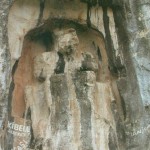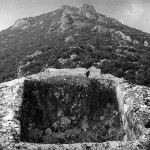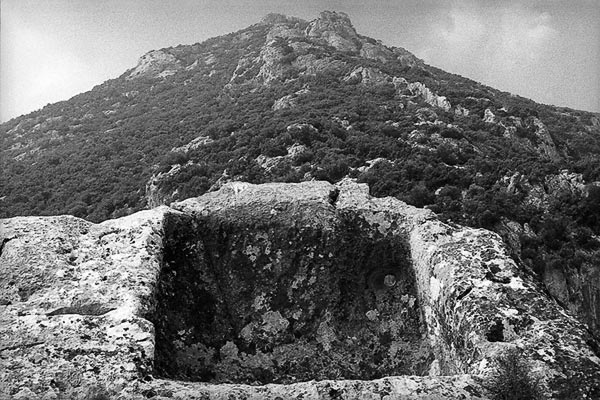Tantalis appears in classical texts and in, for example, in the account of a Greek travel writer, Pausanias in the 2nd century A.D.
Such a lost city is said to be twenty miles from the port of Izmir on the Aegean coast. King Tantalus, if he existed, would have been a King of Lydia, before the historical king Croesus, and the centre of his kingdom at Mount Sipylus. The tale has it that when he lost the favour of gods, his city, Tantalis, was destroyed by an earthquake and it now lies buried beneath a lake. Here is where another thread of opportunity arises to link these accounts of an ancient city, lost in this way, with Plato’s account of Atlantis. The Atlantis story is very pervasive in ancient history, whether seen as a metaphor or a place of historical significance, if highly exaggerated. It keeps popping up and here here rises again, the idea being that interpretations of location of a lost city, drowned beneath water, were misunderstood from the beginning and misplaced.
 The authors, Peter James and Nick Thorpe, in their book ‘Ancient Mysteries’ explain how on the north face of Mount Sipylus is an effigy carved into the side of the mountain. Pausanias reckoned it depicted the Mother Goddes Cybele, claiming it was carved Tantalus’ son, Broteas. (But I wonder how he would have known that). The sculpture is 30 feet tall and situated 300 feet above the plain below. Apparently there are some Hittite hieroglyphic inscriptions to show that the monument was made in Bronze age times, about 14000 B.C or earlier. Intriguingly, a few miles eastward of the the sculpture is, what James and Thorpe describe as an extraordinary tomb which is approached by a flight of steps, all cut from the rock. It is not possible to say how old the tomb. It is described as unique in its design. Nothing remains inside it. Pausanias thought this could be the tomb of an historical King Tantalus. Between the Scuplture of Cybele and the ‘tomb of Tantalus’ is another location of archeological interest, a large rock cut seat at the top of the crag.
The authors, Peter James and Nick Thorpe, in their book ‘Ancient Mysteries’ explain how on the north face of Mount Sipylus is an effigy carved into the side of the mountain. Pausanias reckoned it depicted the Mother Goddes Cybele, claiming it was carved Tantalus’ son, Broteas. (But I wonder how he would have known that). The sculpture is 30 feet tall and situated 300 feet above the plain below. Apparently there are some Hittite hieroglyphic inscriptions to show that the monument was made in Bronze age times, about 14000 B.C or earlier. Intriguingly, a few miles eastward of the the sculpture is, what James and Thorpe describe as an extraordinary tomb which is approached by a flight of steps, all cut from the rock. It is not possible to say how old the tomb. It is described as unique in its design. Nothing remains inside it. Pausanias thought this could be the tomb of an historical King Tantalus. Between the Scuplture of Cybele and the ‘tomb of Tantalus’ is another location of archeological interest, a large rock cut seat at the top of the crag.  From this high position, it’s possible to survey all that is happening in the land below. Because rock cut seats like this are known from Hittite Boghazkoy, this could be considered a ‘throne’ of that kind and therefore a relic of the Bronze age people who settled in Sipylus.
From this high position, it’s possible to survey all that is happening in the land below. Because rock cut seats like this are known from Hittite Boghazkoy, this could be considered a ‘throne’ of that kind and therefore a relic of the Bronze age people who settled in Sipylus.
Below the mountain, many years ago, there was a lake but forty years ago it was drained and the area used for farm land. A crack in the mountain is where Pausanias thought the water would have run down to the city. Ruins were said to have been seen in this lake Saloe before they became obscured by mud. Others besides Pausanias have also identified this as the spot where ancients thought was Tantalis. I would agree with the authors that whoever carved the sculpture of Cybelle would have been very skilled and would only have applied this level this level of work and craft if the reason for doing so was of considerable significance to them. As the authors account, it is the work of a highly organised bronze age community.
So it is commented that this site is almost certainly the site of Tantalis of classical legend. As a sunken city, it doesn’t seem to fit the more grandiose descriptions associated with a lost city such as Atlantis Atlantis, but it is thought maybe it could be a a legend that lay behind the legend? The story, and the documentations that surrounds Tantalis enable history, archeology and legend to fittingly sit together in this instance. Situated along the western coast of Anatolia it would have been positioned between Mycenaean and Hittite civilisations.
